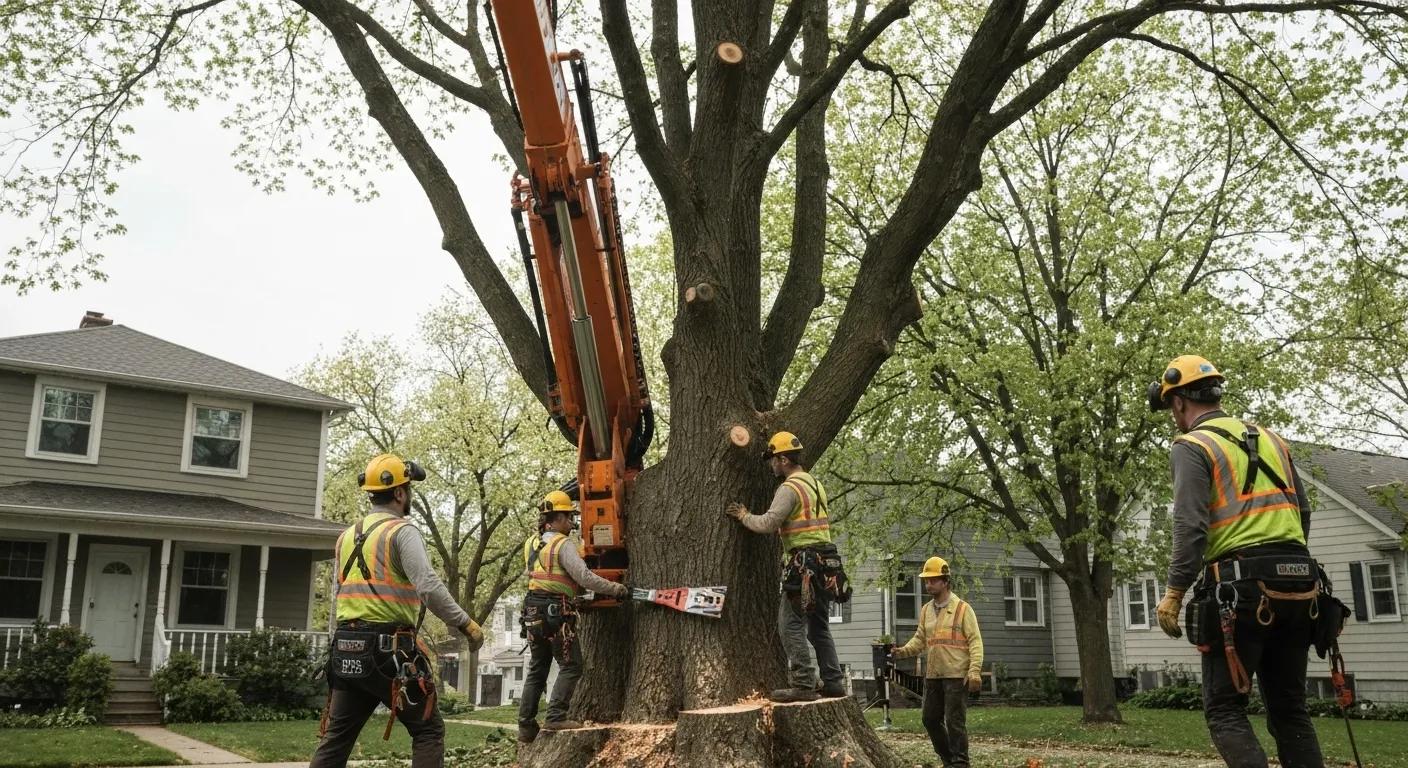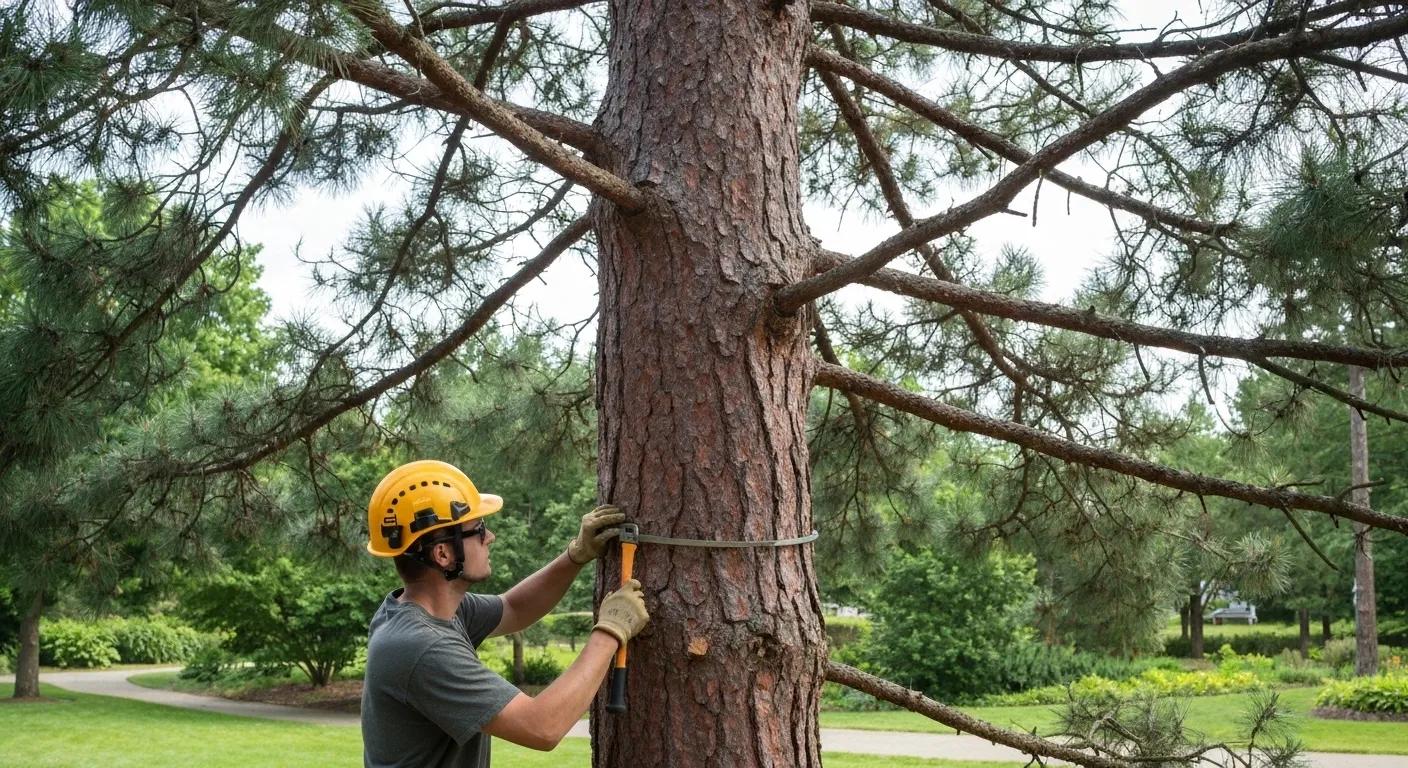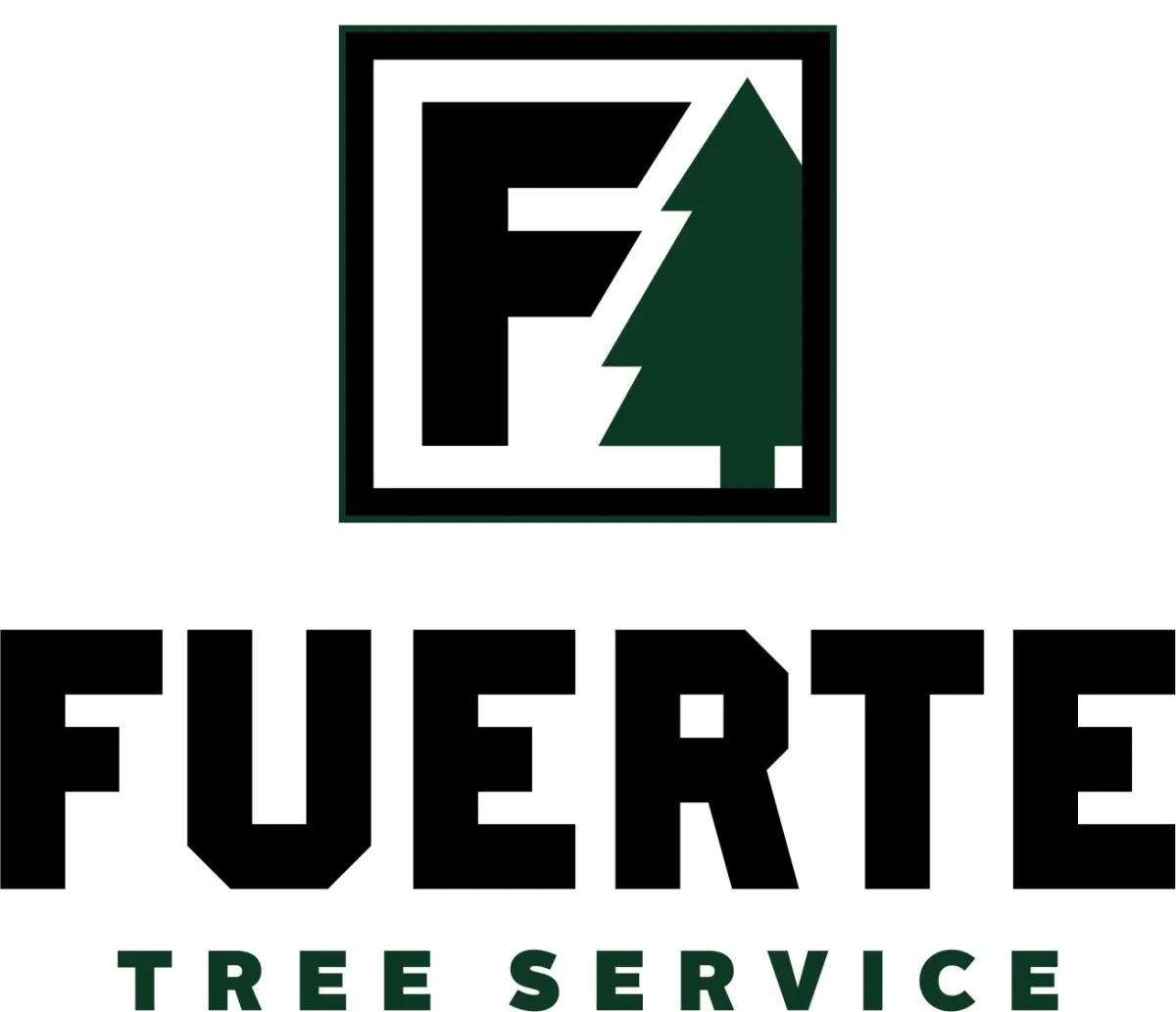
Find Top Tree Removal Near Me for Safe and Professional Care
Top Tree Removal Services Near Me: Find the Best Rated Tree Removal Experts

Removing a hazardous or unwanted tree requires precision, safety and industry expertise—top tree removal services near you deliver all three. Whether you face a storm-damaged oak or a diseased pine threatening your home, this guide shows how certified arboricultural experts manage every step. You’ll discover why high ratings matter, the end-to-end removal process, the types of trees handled, cost factors, emergency options, arborist roles and key considerations before hiring. From free estimates and hazard assessments to stump grinding and site restoration, learn how to choose a local, trusted provider for seamless tree removal. Try Fuerte Tree Service for your local tree removal in Bakersfield, CA.
Why Choose a Top Rated Tree Removal Company?
Selecting a top rated tree removal company ensures safety, efficiency and compliance with industry standards. Expert crews follow rigorous protocols to protect property and personnel, backed by certified arborists and full insurance coverage. For example, an ISA-certified team will accurately assess tree health, reducing risks during removal. These benchmarks guarantee professional results and peace of mind for homeowners and businesses alike.
What Safety Standards Do Professional Tree Removal Services Follow?
Professional tree removal outfits adhere to ANSI A300 standards and TCIA safety protocols to minimize accidents. Before cutting begins, crews don personal protective equipment (PPE) including helmets, eye protection and chainsaw chaps. They secure work zones with barriers and warning signs to keep bystanders safe. Climbing harnesses, rope systems and aerial lift guidelines ensure fall protection for arborists operating at height.
Pre-job safety briefing ensures every team member understands roles and hazards.
OSHA-compliant scaffolding and ground crew signaling maintain clear communication.
Equipment inspections before use guarantee tools operate correctly and safely.
These measures create a controlled environment, preventing property damage and injury while setting the stage for precise removal.
Safety Standards in Tree Removal
Professional tree removal services adhere to safety standards like ANSI A300 and TCIA protocols to minimize accidents and ensure the safety of both workers and property. These standards dictate the use of personal protective equipment, work zone management, and fall protection measures for arborists working at heights.
American National Standards Institute (ANSI), ANSI A300 Standards
How Do Certified Arborists Improve Tree Removal Quality?

Certified arborists apply botanical knowledge to removal projects, preserving landscape integrity and reducing collateral damage. Their expertise in tree biology informs optimal cut locations and prevents undue stress on surrounding vegetation. For instance, an arborist identifies internal decay before felling, guiding safe limb-by-limb dismantling. By integrating risk assessment, they ensure cleaner cuts, healthier adjacent plants and accurate post-removal restoration.
Role of Certified Arborists
Certified arborists apply their knowledge of tree biology to removal projects, which helps preserve landscape integrity and reduce potential damage. Their expertise in tree biology informs optimal cut locations and prevents undue stress on surrounding vegetation, leading to cleaner cuts and healthier adjacent plants.
International Society of Arboriculture (ISA), Certified Arborist Program
What Insurance and Licensing Should You Expect from Top Tree Removal Companies?
Top tree removal services carry general liability, worker’s compensation and umbrella coverage to protect clients and crews. Licensing typically includes state arborist credentials and local contractor permits. Comprehensive policies cover property damage, personal injury and regulatory compliance fines. Verifying these documents upfront confirms the provider’s professionalism and safeguards you from unexpected liabilities.
How Does Customer Satisfaction Reflect Service Quality?
Customer reviews and ratings quantify service reliability, responsiveness and cleanup standards. High satisfaction scores often correlate with repeat business and referrals, demonstrating consistent performance. Monitoring platforms like Google Business Profile and industry-specific directories reveal patterns in punctuality, communication and overall value. Trust signals such as five-star testimonials indicate a track record of safe, efficient and courteous tree removal.
What Is the Tree Removal Process Used by Top Tree Removal Experts?
Top tree removal experts follow a structured process to guarantee safety, compliance and landscape restoration. They begin with consultation and a free estimate, proceed through hazard assessment, execute safe felling, grind stumps, and finish with thorough cleanup. This end-to-end approach ensures minimal disruption and leaves your property restored to its intended aesthetic and functional state.
How Is the Initial Consultation and Free Estimate Conducted?
The process starts with an on-site consultation where a qualified arborist evaluates tree size, location and health. They measure trunk diameter, inspect root stability and note obstacles like power lines or structures. Based on these observations, a written estimate itemizes labor, equipment and disposal costs. This transparent proposal empowers you to compare quotes and plan accordingly.
What Steps Are Involved in Hazard Assessment and Planning?
Hazard assessment identifies risks associated with each tree and its surroundings before any cutting begins. Crews map out potential drop zones, evaluate disease or decay presence and determine limb stability. They use resistograph or sonic tomography tools to detect internal rot and plan cut sequences accordingly. This planning phase allocates resources like cranes, rigging lines and ground support to ensure controlled removal.
Identify overhead utility conflicts and schedule permit acquisitions if necessary.
Define exclusion zones and emergency response procedures.
Coordinate with local authorities for public safety in high-traffic areas.
Comprehensive planning mitigates surprises, making the actual removal smoother and safer.
Which Safe Tree Felling Techniques Are Employed?
Safe tree felling relies on specialized equipment and industry-proven rigging methods. The table below compares key tools, their purpose and safety benefits.
These techniques ensure each tree section is guided away from structures, enhancing property protection and crew safety.
How Is Stump Grinding and Debris Removal Performed?
After felling, stump grinding machines obliterate remaining stumps by milling wood chips into mulch. Operators adjust grinder depth to remove major roots below grade, preventing regrowth. Debris is then chipped or hauled off, with wood chips recycled for mulch or biomass. This efficient method restores the planting area and avoids unsightly stump remnants.
What Does Site Cleanup and Landscape Restoration Include?
Site cleanup involves removing wood chips, branches and tools, followed by a final walk-through with the client. Crews rake residual debris, power-wash driveway stains and backfill hole depressions from stump removal. Landscape restoration may include spreading topsoil, seeding grass or reinstating ground cover. This comprehensive approach transforms a cut-out into a ready-to-use outdoor space.
What Types of Trees Do Top Tree Removal Services Handle?
Leading tree removal companies possess the expertise and equipment to tackle a wide spectrum of species and conditions. From towering hardwoods to compromised evergreens, they apply species-specific techniques to minimize risk and maintain ecosystem balance. Understanding these capabilities ensures your chosen provider can address your unique tree removal needs.
How Are Large Trees Safely Removed?
Large trees over 60 feet demand sectional dismantling using cranes and rope-and-pulley systems. Crews create strategic cut points at safe heights, lower heavy sections with rigging gear, and keep ground crews clear of fall zones. This controlled method prevents uncontrolled trunk collapse and protects adjacent structures and vegetation.
When Should Diseased or Dying Trees Be Removed?
Diseased or dying trees exhibit symptoms such as fungal fruiting bodies, bark lesions or declining foliage density. Once internal decay compromises structural integrity, removal prevents sudden failure or pest spread. Scheduling removal early in the disease cycle limits collateral damage and reduces the chance of emergency situations.
How Are Storm-Damaged Trees Assessed and Removed?
After severe weather, experts inspect cracked trunks, split limbs and root upheaval to determine immediate hazards. They prioritize critical removals where branches threaten power lines or structures, using storm-response crews available 24/7. Safe extraction employs remote-controlled equipment where access is restricted by debris or unstable ground.
Why Is Tree Removal Near Structures or Power Lines Critical?
Removing trees close to buildings or electrical lines addresses serious property damage and electrocution risks. Experts coordinate with utilities for line de-energizing, deploy insulated tools and maintain clearance standards. This critical service prevents costly outages, fires and structural harm while ensuring regulatory compliance.
How Much Does Top Tree Removal Cost? Factors Affecting Pricing Explained
Tree removal pricing reflects a combination of labor, equipment, disposal and regulatory fees. Costs vary based on tree size, health condition, access complexity and permit requirements. Understanding these components helps homeowners compare quotes and select the best value without compromising safety or quality.
What Are the Typical Cost Components of Tree Removal?
Below is an overview of common cost elements and their impact on project budgets.
Cost Components of Tree Removal
Tree removal costs are influenced by various factors, including labor, equipment use, disposal fees, and permits. Labor typically accounts for a significant portion of the total cost, followed by equipment rental and disposal fees. Understanding these components helps homeowners compare quotes and avoid unexpected charges.
Consumer Reports, Tree Removal Costs (2024)
How Do Tree Size and Condition Influence Removal Cost?
Tree diameter, height and canopy complexity directly affect labor time and equipment needs. A healthy, young tree may require a single-crew chainsaw removal, while a brittle, multi-stem oak demands sectional dismantling with cranes. Diseased or pest-infested trees involve additional safety measures and disposal protocols, increasing costs.
Are Free Estimates and Insurance Claims Available?
Many top tree removal providers offer no-obligation, on-site estimates and assist with insurance paperwork after storm or damage events. They document tree condition with photos and reports, streamlining claim submissions. This customer-centric service reduces out-of-pocket expenses and expedites reimbursement processes.
How Can You Compare Pricing Among Top Tree Removal Companies?
When evaluating quotes, ensure each estimate includes labor breakdown, equipment rental, disposal and permit fees. Confirm adherence to safety standards and arborist certifications. Favor providers that offer transparent, itemized proposals rather than lump-sum pricing to accurately compare services and avoid unexpected surcharges.
What Emergency Tree Removal Services Are Offered by Top Providers?

Urgent tree removal addresses hazardous situations where delayed action endangers life or property. Leading companies maintain rapid-response teams staffed with emergency-certified arborists and equipped with all-terrain vehicles, generators and portable lighting. 24/7 availability ensures that storm-damaged or unstable trees receive immediate attention.
When Is Emergency Tree Removal Necessary?
Emergency removal becomes critical when a tree or limb poses imminent risk to structures, power lines or roadways. Conditions triggering urgent service include root uplift from flooding, impact damage from falling debris or partial trunk splits. Rapid intervention prevents further property loss and mitigates safety hazards.
How Do Emergency Services Ensure Safety and Speed?
Emergency crews deploy GPS-tracked vehicles and mobile command units to assess and reach affected sites swiftly. They use compact remote-control saws and cranes suited for tight spaces, and coordinate with utility companies for line shutdowns. Streamlined hazard assessment protocols cut response times while maintaining strict safety controls.
What Are the Post-Storm Cleanup Procedures?
After removal, teams clear storm-debris by chipping branches, hauling trunks and disposing of waste per local regulations. They inspect surrounding trees for secondary damage, apply bracing or cabling where salvageable, and restore access routes. This comprehensive cleanup readies properties for safe occupancy and prevents further storm-related issues.
How Do Certified Arborists Support Tree Health and Removal Decisions?
Certified arborists combine scientific knowledge with practical experience to guide removal and preservation choices. Through diagnostics, risk analysis and species-specific recommendations, they help property owners decide between removal, pruning or treatment. Their expertise ensures interventions align with long-term landscape health and safety objectives.
What Tree Health Issues Do Arborists Diagnose?
Arborists identify diseases like Dutch Elm Disease, oak wilt and root rot through visual inspection and laboratory testing. They detect pest infestations such as emerald ash borer or bark beetles by examining foliage, bark patterns and resin flow. Early diagnosis enables targeted treatments or timely removal to contain outbreaks and protect surrounding vegetation.
How Do Arborists Advise on Tree Removal vs. Preservation?
Using risk-assessment tools and canopy analysis, arborists evaluate structural defects, growth patterns and environmental impacts. They recommend pruning or bracing for trees with minor faults, while advising full removal for irreparable decay or hazardous lean. This balanced approach preserves valuable specimens and prioritizes safety where corrective measures fall short.
What Are the Benefits of ISA Certified Arborist Services?
ISA certification demonstrates mastery of tree biology, ethics and industry best practices. Certified arborists deliver accurate health assessments, follow proven risk-reduction techniques and comply with environmental regulations. Their involvement reduces liability, optimizes removal strategies and enhances the overall quality of landscape management.
What Are Common Questions About Top Tree Removal Services?
Homeowners often ask key questions to validate a tree removal provider’s expertise, safety and value. The following sections address five of the most frequent inquiries, offering clear guidance and actionable insights.
How Much Does It Cost to Remove a Large Tree?
Removing a large tree typically ranges from $1,000 to $3,000, depending on trunk diameter, height and access difficulty. Costs escalate when cranes or specialist rigging are required. A free estimate clarifies project scope and ensures budget alignment before work begins.
When Is the Best Time of Year for Tree Removal?
Late winter to early spring is ideal for tree removal because deciduous trees are dormant, reducing sap flow and stress on adjacent vegetation. Dry ground conditions also facilitate access and equipment positioning. However, emergency removals may occur year-round when safety dictates immediate action.
Do I Need a Permit to Remove a Tree on My Property?
Permit requirements vary by municipality and tree type. Many cities mandate permits for removing heritage or street trees, with inspection fees and replanting obligations. Your tree removal expert can secure necessary approvals, ensuring regulatory compliance and avoiding fines.
What Questions Should I Ask a Tree Removal Company?
Ask about certifications (e.g., ISA), insurance coverage, equipment capabilities, safety record and permit handling. Inquire how they manage cleanup and disposal, request references or project photos, and compare itemized estimates. These questions verify professionalism and service completeness.
Is Tree Topping Harmful to Trees?
Yes, tree topping severs major branches indiscriminately, resulting in weak new shoots and increased decay. This practice destabilizes structure, elevates failure risk and often necessitates eventual removal. Professional pruning or canopy reduction achieves balance while preserving health and integrity.
Removing trees safely and responsibly demands specialist skills, certified arborists and a transparent, step-by-step process. By choosing a highly rated provider, you benefit from rigorous safety standards, clear cost breakdowns and comprehensive site restoration. Whether addressing emergency hazards or planning scheduled removals, these experts protect your property and promote long-term landscape health. Contact your local top tree removal service for a detailed consultation and free estimate today; expert support is just a call away.






